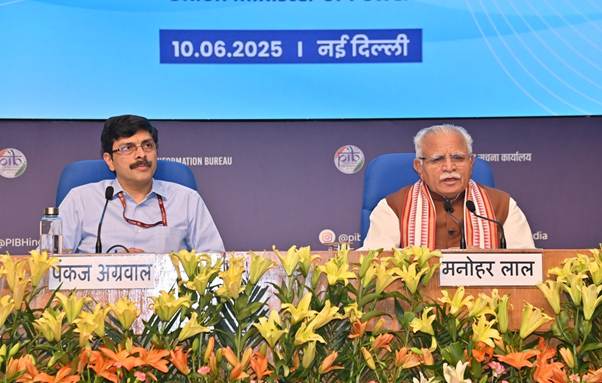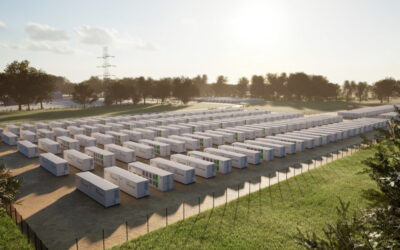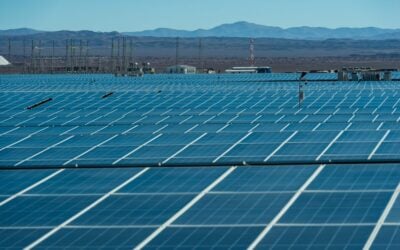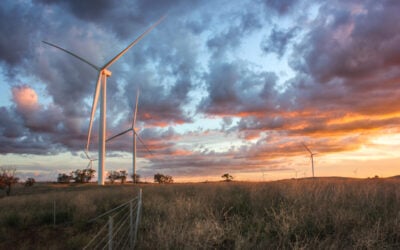
India’s Ministry of Power has significantly increased the size and scope of its Viability Gap Funding (VGF) scheme to support battery storage projects.
Minister of Power Manohar Lal gave a press conference yesterday in New Delhi, highlighting achievements in “transformative growth” in the power sector, including the addition during 2024-2025 of 34GW of new generation capacity, of which 29.5GW came from renewable energy sources.
Lal announced that the Ministry of Power has approved Capex support for an additional 30GWh of battery energy storage system (BESS) projects, on top of 13.2GWh of VGF support already launched.
The minister noted that the scheme’s additional IR54 billion (US$631.5 million) is expected to attract a further IR330 billion in private investment in BESS projects.
Try Premium for just $1
- Full premium access for the first month at only $1
- Converts to an annual rate after 30 days unless cancelled
- Cancel anytime during the trial period
Premium Benefits
- Expert industry analysis and interviews
- Digital access to PV Tech Power journal
- Exclusive event discounts
Or get the full Premium subscription right away
Or continue reading this article for free
The scheme aims to support the development of energy storage resources, which the Ministry deems essential to enabling a 393GW solar PV and wind installation target by 2030, out of 500GW of new non-fossil fuel generation. This would make variable renewable energy (VRE) generation about 50% of the generation mix by 2030.
The Ministry of Power has also just extended a waiver on transmission charges for pumped hydro energy storage (PHES) and BESS projects connecting to India’s Inter-State Transmission System (ISTS).
Standalone BESS projects continue to be granted exemption from the charges as per existing guidelines. Meanwhile, PHES plants and BESS plants co-located with solar PV for which construction contracts have been awarded on or before 30 June 2028 will get a 100% waiver. However, power from BESS plants, which share a grid connection with the solar facilities, must be consumed outside of the state in which the project is located.
Along with other updates on India’s power sector, including transmission network investments and the status of peak demand management on the grid, Minister Lal announced that the first turbine has been connected to the grid at the 250MW Tehri PHES plant in Uttarkand.
VGF boost kick-starting India’s standalone BESS sector
In a Guest Blog for Energy-Storage.news, published yesterday, Debmalya Sen, president of the India Energy Storage Alliance (IESA), explained that VGF sees the Union government fund up to 30% of project Capex, payable in tranches during construction and operation.
In his comprehensive overview of both downstream deployment activities and upstream manufacturing efforts in India, Sen described the frameworks of government policy and support, the tenders driving storage uptake across the country, and the opportunities and challenges ahead for domestic battery cell manufacturing and assembly of batteries and storage systems.
Debmalya Sen noted that the extension of support announced yesterday adds 16% Capex support for the additional 30GWh of projects. The new capacity has been allocated to 15 states and to state majority-owned power produced NTPC.
According to a Ministry of Power letter sent to the Indian states, NTPC and to India Grid which Energy-Storage.news has seen, 25GWh of capacity will be awarded to the various states and 5GWh to NTPC. NTPC will integrate BESS with its existing thermal power fleet and transmission network and use the resources to help it deliver power outside of solar-generating hours.
Successful bidders will receive IR1.8 million per MWh. The states and NTPC must submit their proposals within 30 days of the Ministry of Power letter, sent on 9 June.
Projects are required to be commissioned within 18 months of the signing of a battery energy storage purchase agreement (BESPA)/power purchase agreement (PPA). The first 20% of VGF funding tranches will be paid out upon project financial closure, the next 50% on the commercial operation date (COD), and the final 30% on the completion of the first year in commercial operation.
The Ministry of Power said projects of 2-hour duration with an average of 1.5 cycles per 24 hours during operation would be preferred, but did not impose limits on cycling or duration.
Capacity has been allocated to the states and NTPC as follows:
| State/Entity | Megawatt-hour allocation |
| Rajasthan | 4000 |
| Gujarat | 4000 |
| Maharashtra | 4000 |
| Tamil Nadu | 1500 |
| Karnataka | 2000 |
| Andhra Pradesh | 2000 |
| Madhya Pradesh | 1500 |
| Telangana | 1500 |
| Uttar Pradesh | 1500 |
| Haryana | 500 |
| Kerala | 500 |
| Punjab | 500 |
| Chhattisgarh | 500 |
| Odisha | 500 |
| Uttarakhand | 500 |
| NTPC | 5000 |
| TOTAL | 30000 |





